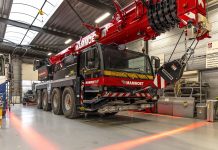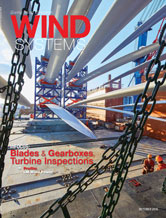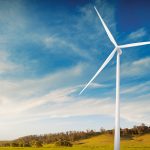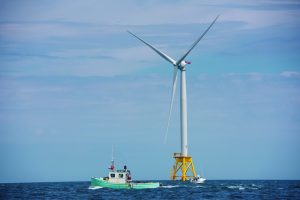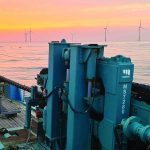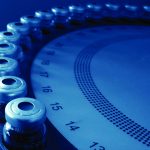Every year, wind-turbine blades face numerous environmental and weather challenges — including rain, hail, blowing sand, and salt spray — that can cause significant leading-edge erosion. Although small in size, these elements can lead to pitting, gouging, and delamination of the blade, severely affecting the entire wind turbine.
In addition to drastically compromising the integrity of the blade, leading-edge erosion also affects a turbine’s overall aerodynamic efficiency. Remarkably, structural changes caused by even minor erosion can have a significant effect on annual energy production (AEP) and return on investment (ROI). In fact, recent studies have demonstrated that pitting and gouging can reduce AEP by approximately 4 to 10 percent, while delamination can reduce AEP by up to 20 percent.
Regardless of geographical location, blade height or length, leading-edge erosion is an issue that affects all wind turbines. So, it’s imperative to proactively implement innovative solutions to address and mitigate the problem. Best practices for wind-turbine repair and maintenance include:
Wind Protection Tape
One of the most popular and trusted solutions for leading-edge erosion repair is wind-protection tape. Constructed with durable, abrasion-resistant polyurethane elastomers, this product originally was developed for the heavy-duty use of aircraft radomes and helicopter blades. After installation on a blade’s leading edge, wind-protection tape shields the blade from erosion, puncturing, tearing, weathering, and water damage.

While coatings may be affected by external conditions, including humidity and temperature, tapes provide uniform thickness and finish, making it one of the most consistent and reliable products for a project.
It’s important for OEMs to research a variety of wind-protection tapes to determine what material composition and application instructions will work best for each repair scenario. Special considerations also should be made to determine UV stability in warmer climates. Fortunately, due to recent innovations, many of the tapes on the market have been designed for simple application in the factory or in the field via rope or platform access, regardless of weather or terrain.
Wind Blade Protective Coatings
Two-component polyurethane coatings are designed to help protect the leading edge of a wind-turbine blade from sand, rain, and other minimal impacts. Protective coatings are applied with either a brush or casting, and they provide excellent erosion protection in a single or multiple layer.
When deciding what application process to use, OEMs should consider that both tapes and coatings can extend the life of a blade by providing maximum turbine efficiency and reducing interruptions caused by service from maintenance and repair. Additionally, when selecting a wind-blade protection coating, attention should focus on a product that can easily be applied in both the factory and the field to ensure an efficient curing process.
Finally, it is also important to consider additional repair options, such as fillers, abrasives, and accessories, if the wind-turbine blade has signs of previous damage. These tactics are typically used in concurrence with protective coatings to ensure a successful repair process.
Wind Epoxy and Polyurethane Fillers
If the wind blade has sustained damage past the point of protection and needs repair, epoxy or polyurethane (PU) fillers can be used to remedy surface damage.
When selecting epoxy or PU fillers, three crucial components should be considered: performance, time, and application methods. There are several options available that incorporate innovative cartridge and applicator systems, which ensure accurate mixing and reduce the possibility of error and waste.

As wind blades are designed to flex substantially during use, fillers need to be flexible, yet tough, to prevent any surface cracking. As fillers become the base of the leading edge, it’s essential to select the correct filler, coating, or wind protection tape to avoid additional blade damage.
Surface Bonding Applications
In addition to extending the life of a wind-turbine blade with preventative measures, there are several tools available to proactively optimize aerodynamic efficiency and AEP. These bonding and composite tools are used to secure aerodynamic attachments — including vortex generators — or bond composite wind blades. Depending on the project, several application solutions are available, including:
Acrylic Foam Tapes: Acrylic foam tapes provide an exceptional substitute to liquid adhesives and mechanical fasteners, due to their durability, ease of application, and ability to withstand residual forces including high UV rays and severe weather conditions. This product is typically used for applications when reliable bonding or sealing is required, and accommodates rigorous flexing and fatigue.
Wind Blade Bonding Adhesives: A two-part, structural epoxy adhesive for bonding composite wind-turbine blades, this high-performance, tough adhesive combines shear and peel strength along with excellent durability. Bonding adhesives also provide a faster cure speed, saving up to six hours of mold time per blade.

Structural Adhesives: Used for bonding composite wind-turbine blades and other general-purpose applications, this rigid adhesive combines high shear strength with excellent toughness and durability.
Dry Layup Adhesive: Dry layup adhesive is a sprayable, synthetic elastomer-based adhesive for bonding and holding glass fabrics and other reinforcements and materials (i.e. flow media) in place during the infusion process.
Conclusion
In an effort to maximize ROI, OEMs must consistently research and identify the best solutions to reduce leading-edge erosion.
By implementing a proactive approach, individuals can address both prevention and repair through the correct use of fillers, protective coatings, tapes, and aerodynamic upgrades.
More importantly, a comprehensive approach to wind-turbine maintenance can lead to a sizeable increase in future earnings and AEP.
For more information about 3M Wind Energy, go to 3M.com/wind.
















